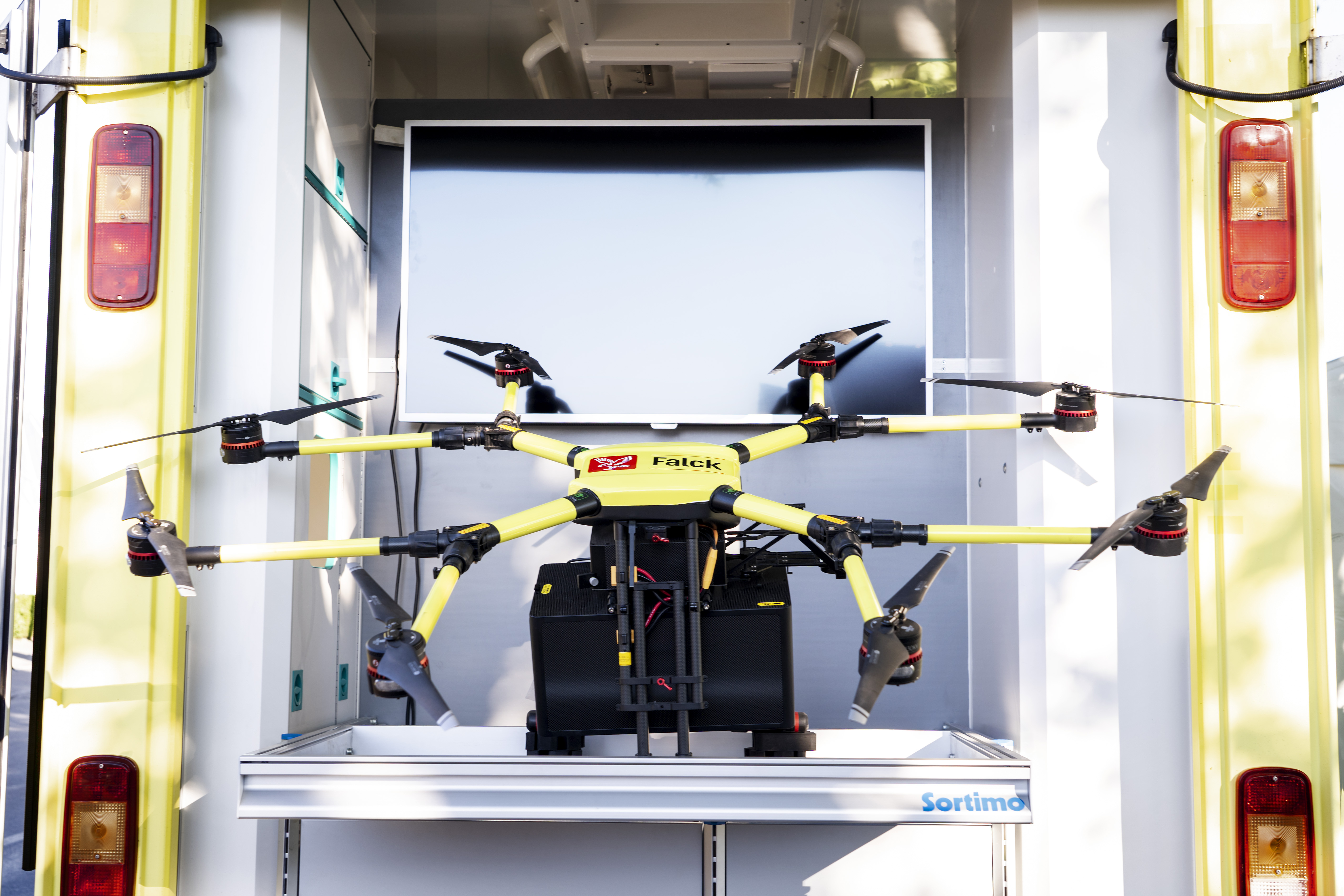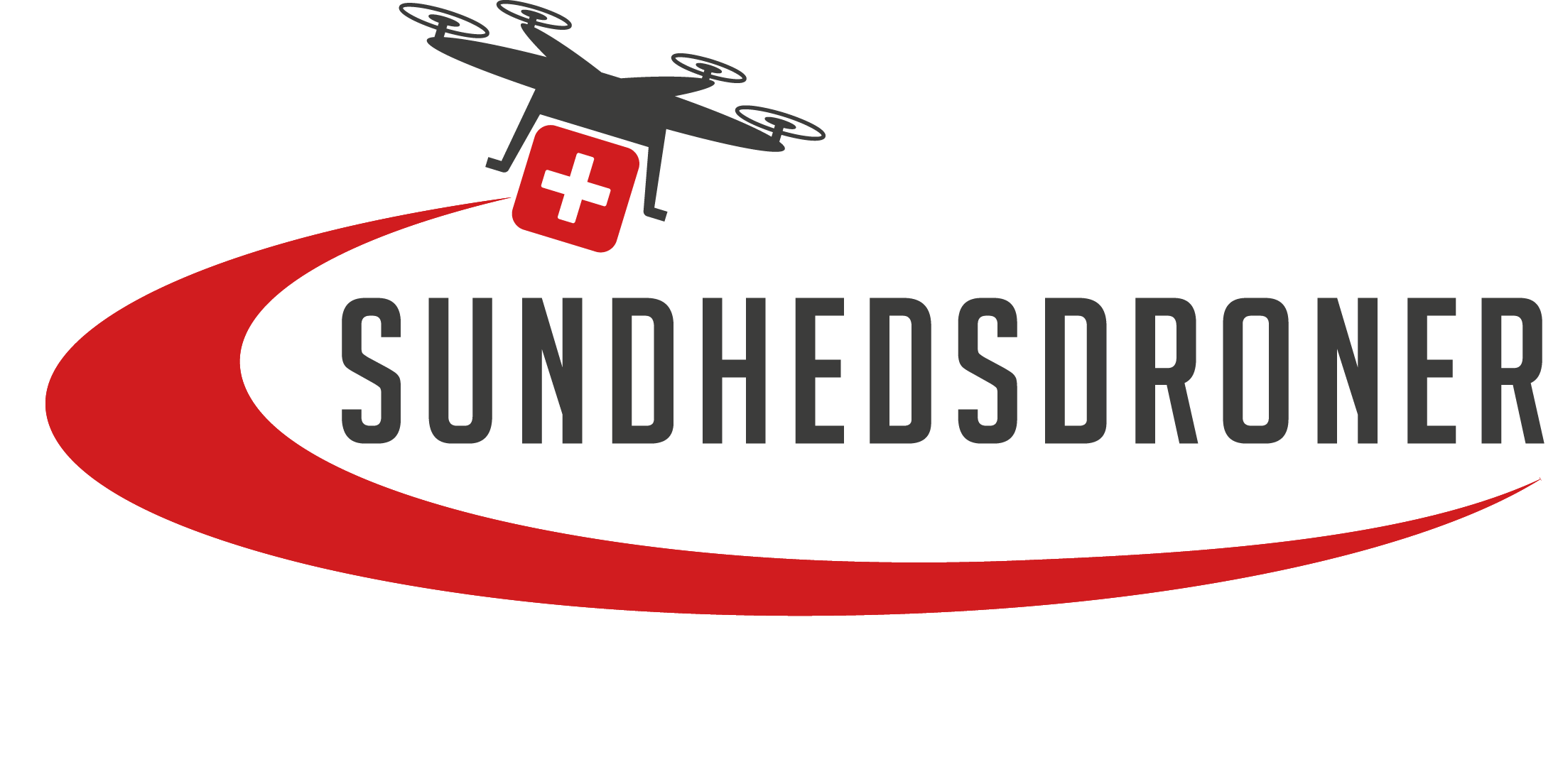The HealthDrone-project goes as planned: Drones are released over Funen
10 March 2020, University of Southern Denmark
After several months of training in the “playpen” in the UAS Denmark test center at the HCA Airport, the drones from the HealthDrone-project will now fly further into airspace
 A partnership consisting of SDU, OUH, Falck Holo, Unifly and Scandanavian Avionics has joined forces in the HealthDrone project, which aims to develop drones that can transport blood tests and medicine between Ærø, Svendborg, and Odense.
A partnership consisting of SDU, OUH, Falck Holo, Unifly and Scandanavian Avionics has joined forces in the HealthDrone project, which aims to develop drones that can transport blood tests and medicine between Ærø, Svendborg, and Odense.
An important milestone has now been reached: The partnership has been authorized to undertake the first routine BVLOS-flights, and now test flights have begun. BVLOS stands for “Beyond Visual Line of Sight” and refers to flights where drones fly so far away that it no longer can be seen by the pilot.
Citizens may spot drones
The authorization allows researchers to test the drones over the fields of North Funen, and this is of great importance to the progress of the project, says project leader Kjeld Jensen from SDU.
- The rules for drone flying are very restrictive. In general, there should always be a pilot present, who should be able to spot the drone with the naked eye. In practice, this means that the maximum range is about 500 meters. In the HealthDrone project, we try to overcome the barriers so that health drones can fly between hospitals, medical clinics, and nursing homes. Now, for the first time, we have been given permission to carry out flights under the European Union Aviation Safety Agency (EASA) Specific Operations Risk Assessment methodology, and we have established a good partnership with the Danish Civil Aviation Authority (CAA) and with Naviair, the Danish Air Navigation Service Provider (ANSP). This is a very important step for the project, Kjeld Jensen says.
Citizens who live close by the HCA Airport will now able to spot health drones outside of the airport's fence approximately twice a week. However, the drones are still flying in closed airspace. Later, the drones will also be tested in open airspace, where they will navigate around other flying objects such as medical helicopters and hot air balloons.
Revolutionizing the healthcare sector
Drones have the potential to revolutionize the entire healthcare sector as we know it, says Peder Jest, who is a medical director at OUH.
- Today, blood samples are carried back and forth in cars, and patients are taken to hospitals for examination. In many cases, patients end up waiting in emergency rooms, only to be sent home again. It costs both time and resources. If we can succeed in making the drones fly back and forth with blood tests and equipment, there will be a possibility that patients, to a larger degree, will be able to be examined and treated in their own homes, which has a long number of benefits, he says.
Drones are thus a good opportunity to develop health professional transport in the pre-hospital area, emphasizes Nicolai Søndergaard Laugesen, who is responsible for Falck’s drone engagement and contracts with public customers.
- We always need to have the patient at the center, and today it goes far beyond bringing patients to the hospitals. It is about ensuring that patients get quick and highly qualified medical treatment, and it can already start at home or in the ambulance. We ought to help contribute to specialized help from big hospitals and that patients come closer to each other. Also, when it comes to patients living in peripheral regions, drones can make a huge difference, he believes.
Expanding to other fields
The HealthDrone project is about adding value to the healthcare system, however, it also contributes to commercial and industry-related perspectives on how drones further along the road can be integrated into our everyday life.
Holo, which is Europe’s leading operator of self-driving solutions, appreciates being a partner in the HealthDrone project and thus reap valuable experiences for the benefit of both the health sector and other industries.
- New means of transportation such as self-driving vehicles and drones creates better mobility. With HealthDrone, we show exactly how drone transportation can improve the healthcare sector with faster diagnosis, better treatment and streamlining. Therefore, we as operators view this as a great potential for scaling solutions like this in both the healthcare system and in society in general, says Mathias Vinter, Project Manager at Holo.
Since the Healthdrones will be sharing the airspace with other flying objects, safety is the number one priority, says Ronni Østergaard, director of Unifly Nordic, which supplies the UAS Traffic Management system (UTM) for the project.
- Our UTM ensures that Healthdrones are correctly integrated into the airspace so that they follow Danish and European legislation and meet all demands in terms of safety, he says.
The partnership expects to start routine flights on Ærø this summer. Before that, a public meeting will be held in Ærøskøbing, where citizens can ask questions with regards to safety and/or to the project in general.
Contacts
Contact project manager Kjeld Jensen, phone number 42802580, kjen@mmmi.sdu.dk for additional information







